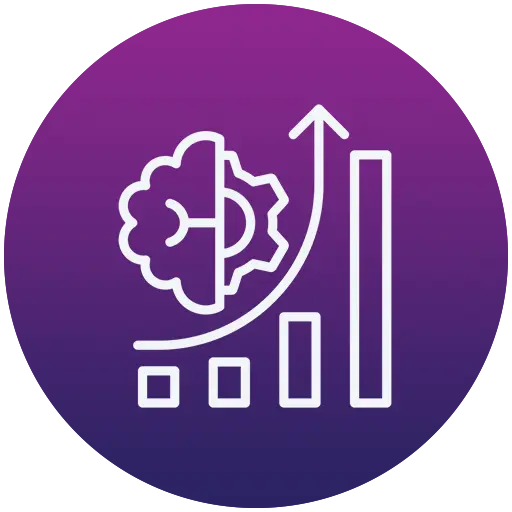
Precision Agriculture: IoT Applications in Modern Farming
14 November 2023
Fraud Detection in Financial Transactions: Machine Learning for Enhanced Security
23 May 2024Agile Transformation in a Technology Startup: Navigating Rapid Growth and Innovation
Introduction
In the fast-paced world of technology startups, the ability to adapt and innovate is paramount for sustained success. This case study explores the journey of a burgeoning technology startup that underwent an Agile transformation to navigate rapid growth, foster innovation, and adapt swiftly to market changes.
Background
The startup, let's call it "TechInnovate," had initially experienced modest success with its innovative product. However, as demand surged, the organization faced challenges in scaling its operations, maintaining product quality, and meeting evolving customer expectations. Recognizing the need for a more flexible and adaptive approach, TechInnovate decided to embark on an Agile transformation journey.
The Challenge
Rapid Growth Strains Traditional Approaches
Client's initial success attracted substantial investor interest, leading to rapid expansion. With the growth came an increased workload, complex projects, and a demand for quicker product releases. The existing waterfall project management approach proved inadequate to keep up with the pace of change, leading to bottlenecks, delayed releases, and diminished innovation.
The Need for Innovation Amidst Competition
In the highly competitive tech landscape, innovation is the lifeblood of startups. The client recognized that maintaining a competitive edge required not only efficient project delivery but also a culture that fostered continuous innovation. The traditional hierarchical structure hindered collaboration and idea generation, stifling the company's creative potential.
The Solution
Embracing Agile Methodologies
To address these challenges, the client decided to undergo an Agile transformation. The leadership team recognized the need for a more iterative, collaborative, and customer-centric approach to software development. The Agile framework offered the flexibility and responsiveness required to navigate the complexities of rapid growth and foster a culture of continuous innovation.
Agile Principles Implementation
- Cross-Functional Teams - The client restructured its teams into cross-functional units, bringing together individuals with diverse skills. This facilitated better collaboration, improved communication, and eliminated silos that had previously hindered progress.
- Iterative Development - Adopting Agile's iterative development approach allowed the client to release Minimum Viable Products (MVPs) quickly, gather user feedback, and make continuous improvements. This not only accelerated time-to-market but also ensured that the product aligned closely with customer expectations.
- Scrum Framework - The Scrum framework became the cornerstone of the client's Agile transformation. Daily stand-up meetings, sprint planning, and retrospective sessions became integral to the development process, fostering transparency, adaptability, and a shared sense of purpose among team members.
- Customer-Centricity - The client embraced a customer-centric mindset, involving customers in the development process and prioritizing features based on their feedback. This shift allowed the startup to deliver solutions that directly addressed user needs, enhancing customer satisfaction and loyalty.
Agile Culture Integration
The client understood that Agile transformation was not just about adopting new methodologies; it required a cultural shift. Leadership actively promoted a culture of openness, experimentation, and learning from failures. Agile values such as individuals and interactions over processes and tools were ingrained into the organization's DNA.
The Implementation Process
Phase 1: Agile Training and Team Restructuring
In the initial phase, all teams underwent comprehensive Agile training. This included Scrum master certifications, Agile workshops, and collaborative exercises to instill Agile principles. Simultaneously, teams were restructured into cross-functional units, breaking down departmental silos.
Phase 2: Pilot Agile Teams
To mitigate risks associated with a wholesale transition, TechInnovate implemented Agile methodologies in pilot teams first. This allowed the organization to test and refine Agile processes in a controlled environment before scaling across the entire organization.
Phase 3: Scaling Across Departments
With the success of the pilot teams, Tech Innovate expanded Agile practices across all departments. This involved aligning product management, development, quality assurance, and operations under Agile principles. Regular training sessions, workshops, and coaching ensured a smooth transition for all team members.
The Results
Accelerated Time-to-Market
The Agile transformation significantly accelerated client's time-to-market. The iterative development approach allowed for quicker releases of new features and improvements, ensuring that the startup remained responsive to changing market demands.
Improved Product Quality
The emphasis on continuous testing and user feedback within the Agile framework led to improved product quality. Defects were identified and addressed early in the development process, reducing the number of post-release issues and enhancing overall customer satisfaction.
Enhanced Innovation and Employee Satisfaction
By fostering a culture of innovation and continuous improvement, the client saw a surge in creative ideas from its employees. The collaborative and empowering nature of Agile methodologies contributed to increased employee satisfaction, engagement, and retention.
Better Adaptation to Market Changes
The Agile framework's adaptability allowed client to respond swiftly to market changes and evolving customer needs. The startup became more resilient to uncertainties, positioning itself as an industry leader capable of navigating the dynamic tech landscape.
Lessons Learned
Continuous Learning and Adaptation
The client's Agile transformation journey underscored the importance of continuous learning and adaptation. Agile is not a one-size-fits-all solution; it requires ongoing refinement to align with the unique needs and challenges of the organization.
Leadership Support and Cultural Alignment
The active involvement of leadership and the alignment of organizational culture with Agile values were critical to the success of the transformation. Leaders played a pivotal role in championing the Agile mindset, encouraging experimentation, and fostering a collaborative environment.
Conclusion
The client's Agile transformation not only enabled the startup to navigate rapid growth successfully but also positioned it as an innovative industry leader. By embracing Agile methodologies and fostering a culture of continuous improvement, client demonstrated that Agile is not just a project management framework; it is a strategic enabler of growth, innovation, and sustained success in the competitive landscape of technology startups. This case study serves as an inspiring example of how Agile principles can be a catalyst for transformative change in organizations experiencing rapid growth and seeking to remain at the forefront of innovation.









